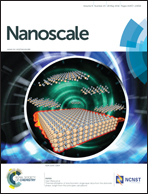Complete Au@ZnO core–shell nanoparticles with enhanced plasmonic absorption enabling significantly improved photocatalysis†
Abstract
Nanostructured ZnO exhibits high chemical stability and unique optical properties, representing a promising candidate among photocatalysts in the field of environmental remediation and solar energy conversion. However, ZnO only absorbs the UV light, which accounts for less than 5% of total solar irradiation, significantly limiting its applications. In this article, we report a facile and efficient approach to overcome the poor wettability between ZnO and Au by carefully modulating the surface charge density on Au nanoparticles (NPs), enabling rapid synthesis of Au@ZnO core–shell NPs at room temperature. The resulting Au@ZnO core–shell NPs exhibit a significantly enhanced plasmonic absorption in the visible range due to the Au NP cores. They also show a significantly improved photocatalytic performance in comparison with their single-component counterparts, i.e., the Au NPs and ZnO NPs. Moreover, the high catalytic activity of the as-synthesized Au@ZnO core–shell NPs can be maintained even after many cycles of photocatalytic reaction. Our results shed light on the fact that the Au@ZnO core–shell NPs represent a promising class of candidates for applications in plasmonics, surface-enhanced spectroscopy, light harvest devices, solar energy conversion, and degradation of organic pollutants.


 Please wait while we load your content...
Please wait while we load your content...